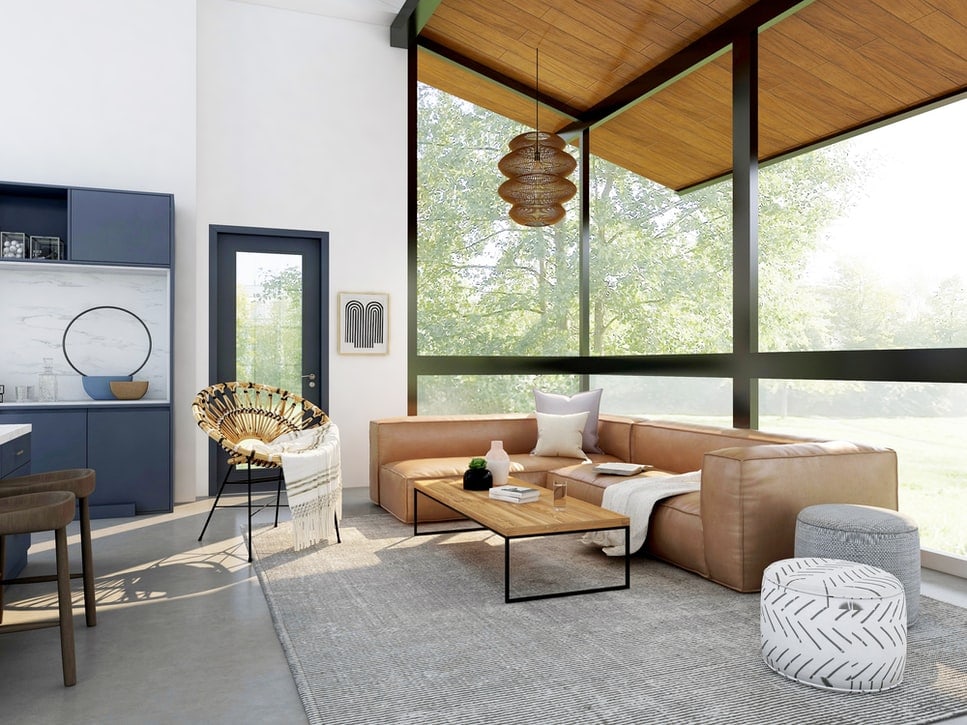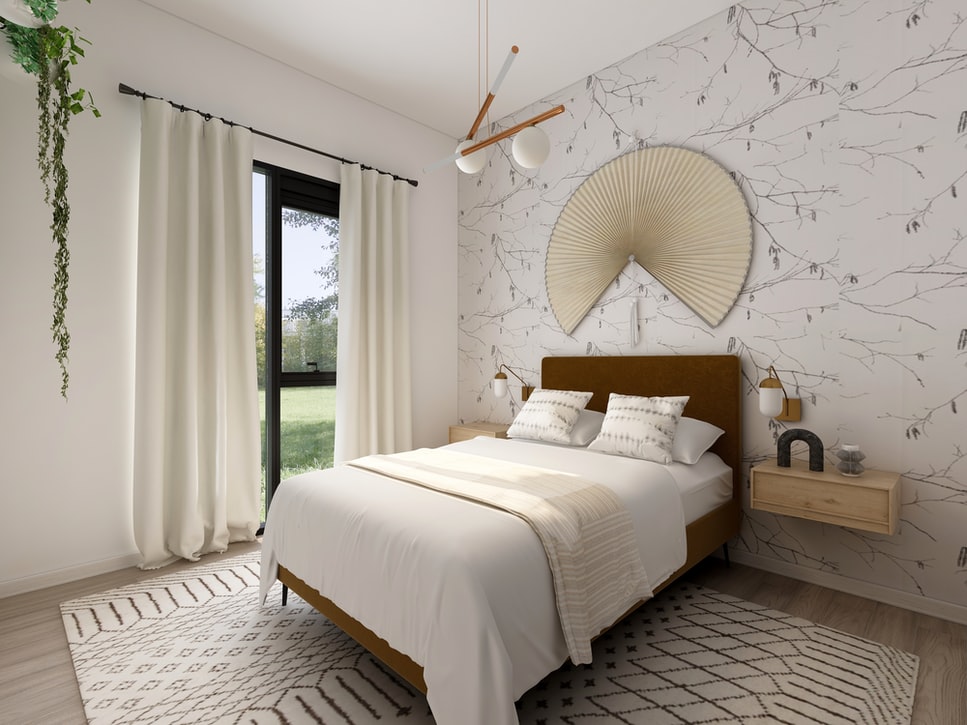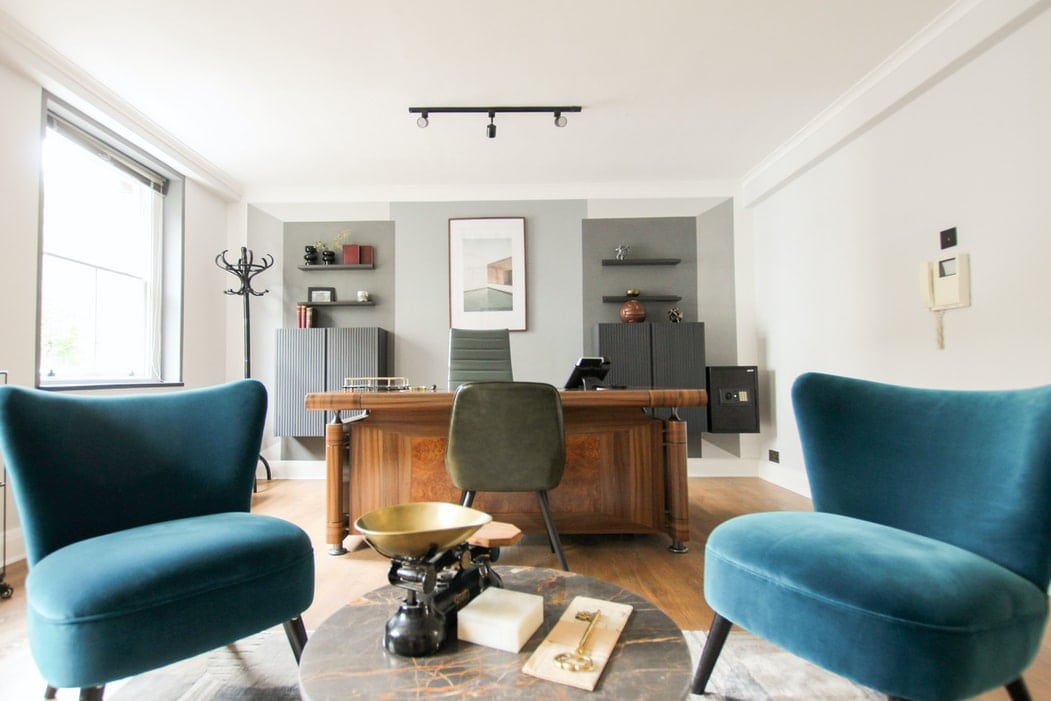If you’re looking to give your home a refresh on a budget but need a little extra design guidance, virtual interior design (a.k.a. e-design) may be the route for you. From ordering decor to implementing your vision, e-design is a DIY-friendly way for you to transform your home at your own pace with the help of an expert along the way. Plus, an e-designer will be able to help with the nitty-gritty components of a home refresh such as space planning and finishes. Before you embark on your home refresh, we turned to a couple of design experts from Mukilteo, WA, all the way to Burlington, ON, to find out how to get the most out of your e-design experience. Here’s what they had to say:

1) Keep your e-designer updated throughout the process
The key to working with an e-designer is communication. Lots of videos, FaceTime, and pictures are essential to help your e-designer visualize themselves in the space without actually physically being there. –Design by Rania
2) Be aware that furniture and decor pieces can sell out quickly
Once the design is complete, acting fast to purchase the specified furniture and decor is key to a successful design. Most of the products selected in an e-design project are from well-known retailers; these items can sell out fast and may not be available again. Additional cost may be accrued if new items need to be specified. –Tailored Home Design
3) Don’t be afraid to ask questions
Typically after the design is finalized, the client is flying solo in the design process so it’s important to be open and ask lots of questions. Remember, design is a conversation. Ask questions about how to complete your design, how to purchase your furniture, lead times, colors, and especially styling. The best thing about working with a designer is having access to their experience, resources, and skills. Even though we’re not there with you in the traditional sense, we are typically a short email or message away. My most happy and successful e-design projects have been due to our follow-up Q+As a few weeks post the final design phase (when the clients receive their shopping lists, instructions, renderings, drawings, etc.). –Apt. 5 Interiors
4) Give honest feedback
Be honest with yourself and your designer. Most e-designers have a questionnaire – fill it out completely and honestly. The questionnaire process takes time and is a chance to dream big when it comes to the design of your space. This also allows the designer the opportunity to get to know you and your personality in order to build a design around your unique taste and needs. –Laureli Designs & Décor

5) Bring ideas and inspirations to the table
Bring us your dreams and wants. When it comes to knowing more about your space, photos will be a great tool. But because we are working from afar, we want to dig a little more into your style. For this, it is always a great tip to have a shareable drive or Pinterest board where you have stored all those precious ideas. This will give us designers a broader vision of your dreamed space and will facilitate the design process. –G. Lebron Interiors
Take time to set an intention for your project ie: visualize the life you hope to have once this project is complete and all of its components. It’s important to feel comfortable investing the time, energy, and financial resources needed for the transformation you desire and understanding the expectations for you as the client and me as the designer. Designers are here to help you bring your vision to life and it is important to be clear on what that looks and feels like to you, not just aesthetically, but energetically. –Sheyna James Interiors
6) Be ready to do the prep work
Accurate measurements are an essential part of the e-design process. We rely on them for space planning and furniture layouts. Go around the entire room and measure each wall, window, doorway, case opening, etc., and don’t forget to provide wall and ceiling heights. –CAD Interiors
Share as much information about the space as possible, including photos of electrical outlets, HVAC registers, and plumbing locations. If you have the existing plans available to share, that is also extremely helpful. –Modern Virtual Designs
7) Leverage technology when communicating with your e-designer
We may not be able to meet in person, but technology will bridge the gap. To start, you can share photos and videos of your existing space and your design inspiration. If you want to go one step further, you can provide your e-designer with a floor plan created using your smartphone (e.g. magicplan) or by having a videoconference. –Studio Graffiti Design
When it comes to e-design, the old cliche ‘a picture is worth a thousand words’ holds true. Since designers don’t get the opportunity to meet you in person during an e-design project, providing images of inspiring rooms, furniture, or colors you’re drawn to can provide a quick way for us to get familiar with your style. Then we can utilize what inspires you to source items that suit your space and budget. –D.Buckley Design
8) Provide as much detail as possible
E-design is a collaborative process and allows us to get to know the client really well via a questionnaire and onboarding process. A lot of clients I work with are worried that working with a designer will give them a space that is too overly designed (a.k.a. too fancy) for their casual lifestyle. The client gets to make decisions every step of the way and ultimately can visualize their space before they invest in putting it together so that it truly feels personalized to them. –Cristina Isabel Design
Provide as much information as possible at the onset of your e-design project. By doing so, you’ll ensure you receive a design that you love and functions well for your home and the way you live. This will also help speed up the design process and minimize revisions that can add time to your final service delivery. –Grit Interiors

9) Have a clear vision
With e-design, you are responsible for executing your final design. It is imperative that you know your budget, style, and design needs in order to receive the most rewarding e-design experience. –House Jefe
Our design questionnaires are designed to help uncover your overall style, taste, and direction by using a set of personality questions. Creating a Pinterest / vision board will also be helpful in learning what you’re naturally drawn to. From here an e-designer will find the common thread to get the project off to the right start. –House & Roam
10) Patience is key to a successful e-design plan
Getting to know your home, your routines in that home, and how you’ll use each space often changes from what you thought before moving into it. This is essential information to share with an e-designer who may never step foot into the actual space they design. Often, prospective clients reach out to me right after they’ve bought their new home- but before they’ve moved into it. This makes sense since they’re excited and motivated to make it their own. However, I always recommend that they live in their spaces for at least a month before I help them make any significant decisions, changes, or purchases. Once clients have a clear idea of what they need, I can get to work and do it all remotely, thanks to technology. –TCB Style & Design
E-design takes time. Just because it’s done virtually, doesn’t mean you’ll have a completed room in a week. It still takes time to design a custom concept, collaborate with clients, and make revisions. Clients implementing the concept will also need time to order items and deal with any lead times for orders. Communicating timely with your e-designer on each step of the process will help to get you to that finish line as quickly as possible. –Reena Ravi Design
11) Determine the scope of your project
This process works well for small projects, either for people looking to finish a space or starting a project from scratch. If you’re undergoing a full renovation or doing a kitchen and bathroom remodel, e-design is only going to get you so far. With e-design, your designer will provide you a floor plan and overall concept, but most e-designs don’t go into all the detail that’s needed for a kitchen, bath, or remodeling project. –Lorena Sauers Interiors

 United States
United States Canada
Canada